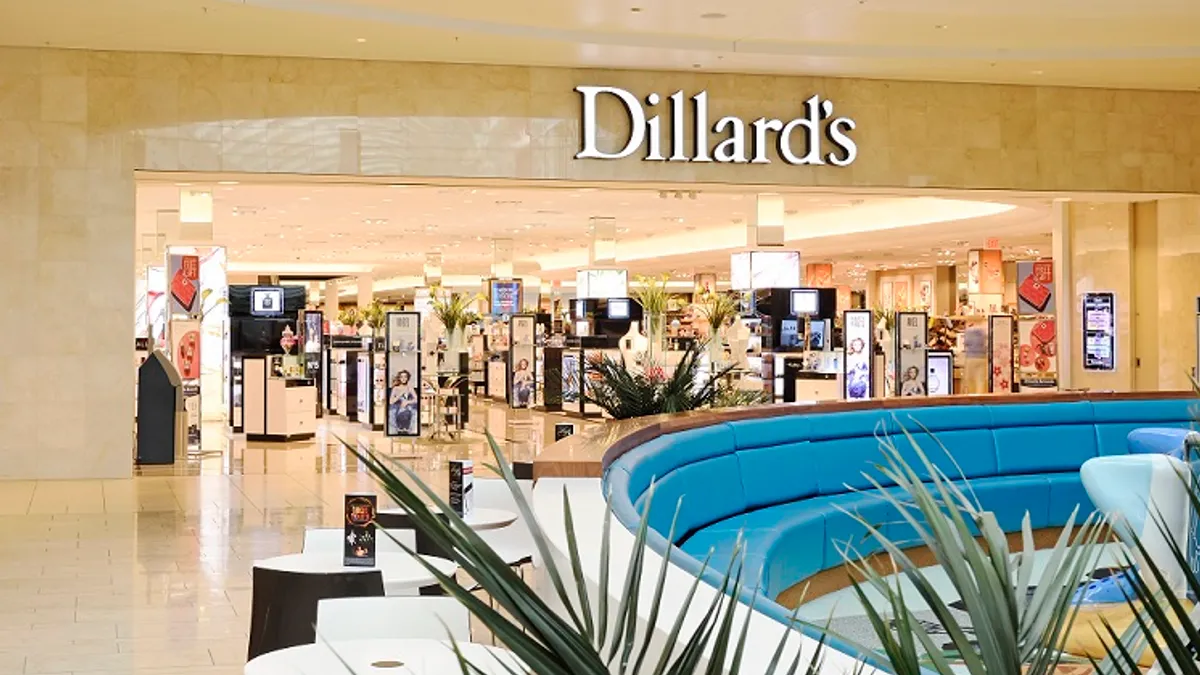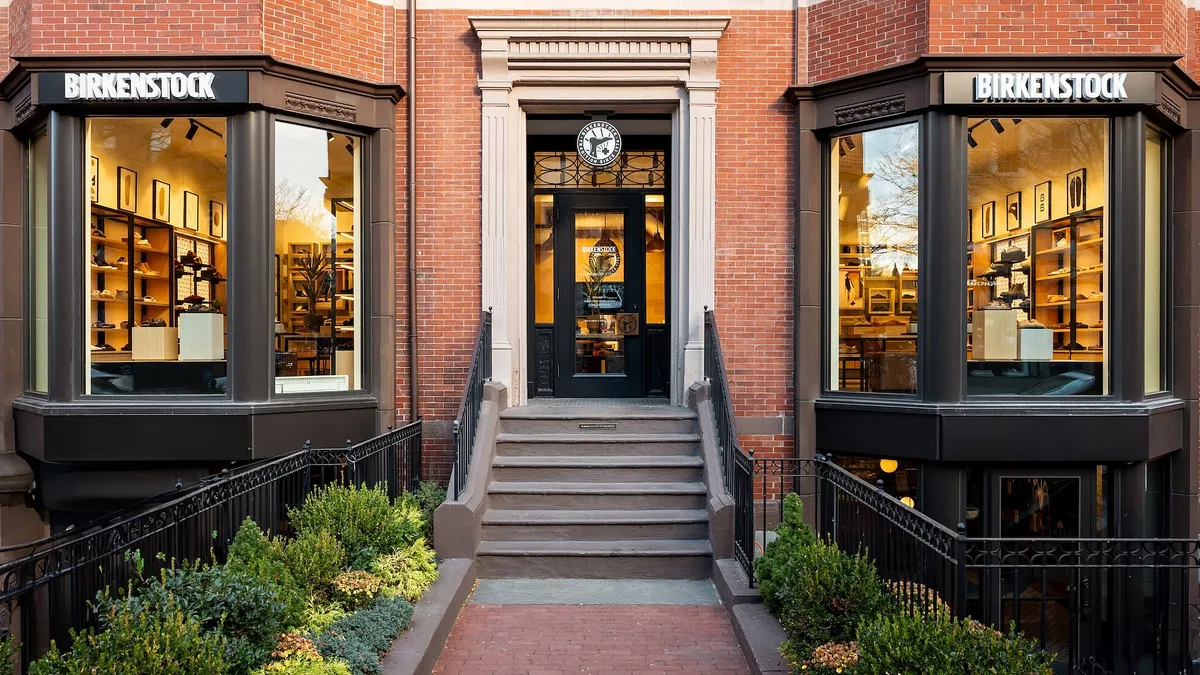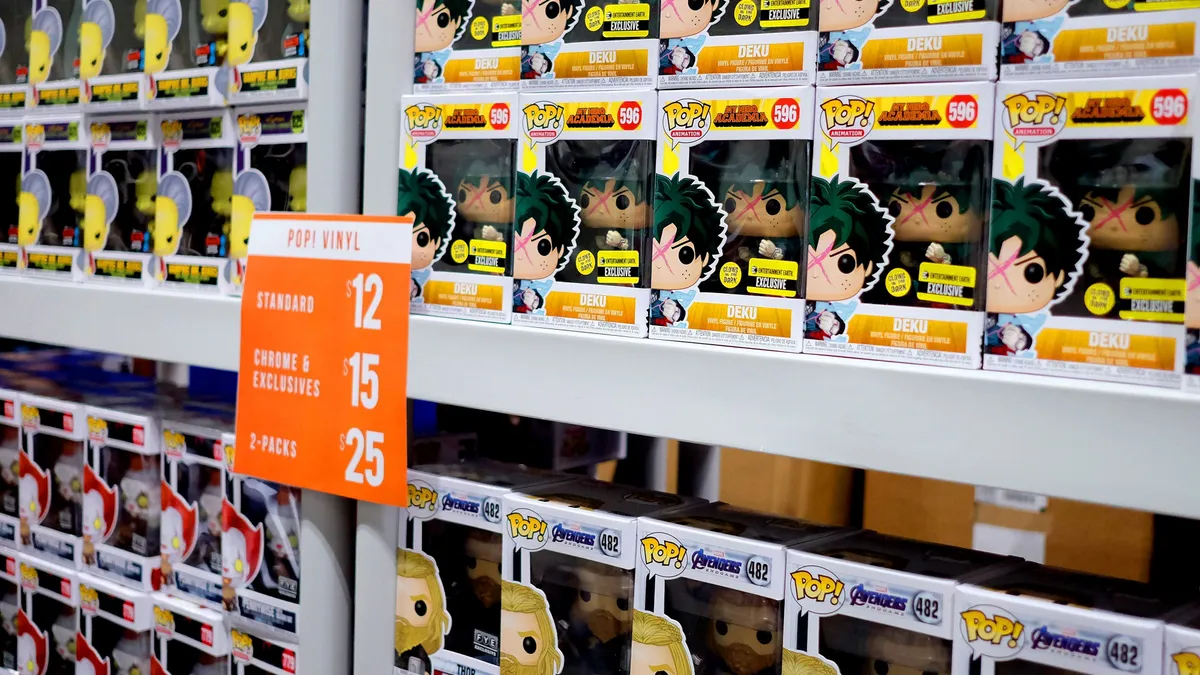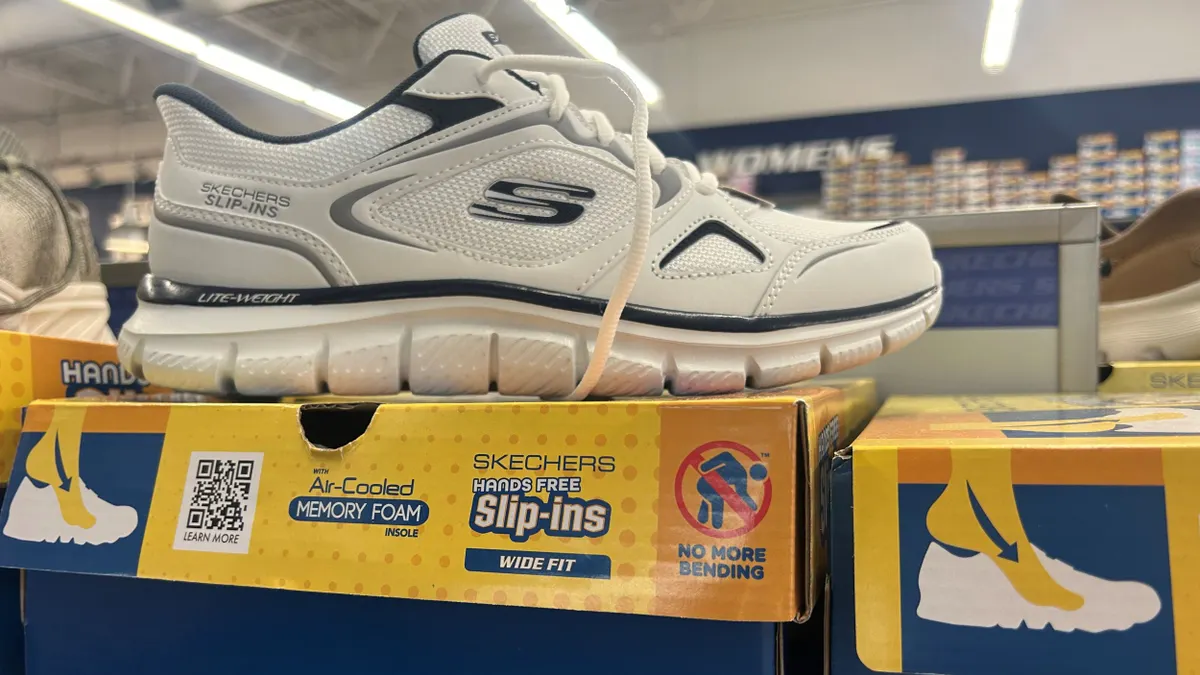Every now and then in retail, decisions turn out so badly that leaders can't even blame the weather. Or "fashion misses."
To be fair, in many segments the industry is fiercely competitive and rapidly changing. It's hard to get right. Margins are thin. Retail businesses are complex. Predicting future trends is speculative work. Consumer taste and loyalty can be fickle. The business world (and media) tend to applaud risk-taking, until a losing hand is drawn.
But there are times when a decision, or its execution, or both, are so flawed or ill-fated that they change the trajectory of a year, or two, or a company's entire future. These stand as cautionary tales for the entire industry.
There are lessons in these failures. Very often they revolve around myopia. "That's where boards come into play," said Nick Egelanian, founder and president of SiteWorks, who as it happens gives a regular presentation on the biggest mistakes in retail history.
"Because the board is supposed to help you with strategic direction," he added. "They're supposed to support and enable management, but they're also supposed to be there at times of strategic moves." In many of the examples Egelanian points to, it's board-level decisions that went awry.
"A lot of these things come down to failures of management, and they come down to a failure of objectivity," said Neil Saunders, managing director of GlobalData Retail. He thinks some of the biggest retail failures boil down to "believing your own hype" and the isolation of leaders from criticism. "It's like the 'Emperor's New Clothes,'" Saunders said. "It takes that child in the room to say, 'You know what? This isn't very sensible. This is a really dumb decision.'"
Lauren Bitar, head of retail consulting at RetailNext, also points to the relentless short-term focus on growth and hitting targets, which has led a lot of retailers to expand their footprints unsustainably and get trapped in merchandise discounting cycles. "I think people aren't realistic with what companies can do," she said.
After talking with retail experts, we compiled a list of some of the biggest mistakes that still loom over the retail industry today, in their implications if nothing else.
1. That time J.C. Penney tried to become Apple
When Ron Johnson, who built Apple's widely admired and well-performing retail business, became J.C. Penney's chief in 2011, he said of his hire, "I've always dreamed of leading a major retail company as CEO, and I am thrilled to have the opportunity to help J. C. Penney re-imagine what I believe to be the single greatest opportunity in American retailing today, the Department Store."
Johnson went on to make radical — and today, infamous — changes. He ditched endless sales, coupons and rounds of discounts (or "fake prices") for everyday low pricing. He tried to turn the staid retailer's stores into destinations by building in-store boutiques. Worst of all, arguably, he did all this without testing the changes first with customers because, as he was later reported to say, "We didn't test at Apple."
Johnson's "single greatest opportunity in retail" became one of the industry's most stunning failures. Comparable sales in 2012 fell a vertigo-inducing 25%. Penney posted net losses of $795 million in 2012, $1.3 billion in 2013 and $717 million in 2014. Under Marvin Ellison, Penney was mostly able to stop the bleeding, but the company funded those losses with debt that is still a burden for the retailer, hobbling it as it tries to secure its footing in a troubled sector.
"Doing nothing wasn't really an option. But doing what they did was a worse option than doing nothing."

Nick Egelanian
Founder and President, SiteWorks
Egelanian describes Penney's hire of Johnson as a case of a company "looking for some kind of silver bullet to get it out of decline," and instead "this guy adopted a strategy that almost killed the company within a year."
Part of the problem was that Johnson fundamentally misunderstood Penney's customer base and how they would react to changes. "If your customers are trained to look for value in a certain way — psychologically, even if you're saying it's the same price and it's just not on sale now, but it's the same price — it just doesn't work," Bitar said.
Along with the approach, the execution failed too. "I think it could have perhaps worked," Bitar said of the changes. "But I think they would need to be more in a phased approach because it's hard to psychologically un-train your customers."
Yet Penney was in decline when it hired Johnson and under pressure to do something to reinvigorate its sales. "The notion of having somebody come in and really rewrite the playbook, and giving them time to see it through, is really important for retail today," said Bridget Johns, chief marketing officer and head of customer experience for RetailNext. While she notes Penney under Johnson didn't test changes thoroughly enough, she also adds that "legacy retailers like J.C. Penney really need radical change. And it's not happening. It's not happening fast enough."
Johns recalls as an example her own niece, then a teenager, responding positively to some of the changes Johnson was making at Penney stores. "Guess what? J.C. Penney is not [currently] attracting new customers," Johns said. "And if they had been able to capture this customer at that time, imagine where J.C. Penney might be today."
Egelanian, though, sees fundamental problems with Johnson's strategies. It's everyday low pricing, he notes, made its value proposition more along the lines of a mass merchant or off-price retailer, who could beat Penney on value and convenience. Meanwhile the in-store boutiques put Penney in the realm of a specialty or fashion retailer. That just confused the customer further.
"Doing nothing wasn't really an option," Egelanian said of Johnson's moves. "But doing what they did was a worse option than doing nothing."
2. Most decisions at Sears from 1993 onward
Ray Hartjen, director of content marketing and public relations at RetailNext, calls it "death by a thousand paper cuts."
For more than a decade, Sears underwent some of the most complex financial engineering imaginable. It spun off and sold prized business assets and real estate, often to entities in which investor-turned-CEO Eddie Lampert had a large stake. Sears also borrowed too much money (often from Lampert). It closed stores. It cut costs. While all this was happening, sales bottomed out.
"Sears was unwilling to make the difficult decisions related to its amount of store space, stubbornly persevering through a continuous erosion of its market value," Hartjen said in an email. "Sears was far from being alone in this mindset, but coupled with poor product assortment and an ambiguous brand identity, it suffered for its sins much more greatly."
"It really just ended up backfiring on them."

Lauren Bitar
Head of Retail Consulting, RetailNext
As Bitar notes, Sears also sliced up the company's management into numerous rival teams all vying for company resources and Lampert's approval. The thought was this would make for an efficient company, but it actually managed to raise administrative costs. "It really just ended up backfiring on them," Bitar said.
Going back further, GlobalData's Saunders said that Kmart's acquisition of Sears, in 2004, following the discount department store's Chapter 11 filing, was one of the most dramatic retail mistakes in its consequences. The merger, which was the brainchild of Lampert, was the beginning of Sears' long, slow-burning decline, in Saunders's view. "What you did is bring together two chains that each had enormous problems and issues," he said. "And the merger made very little sense in terms of solving those underlying issues."
Egelanian thinks Sears' greatest mistake was yet further back, when in 1993 it discontinued its general merchandise catalog.
"They literally got out of the catalog business within a year or two of when Amazon was started," he said. "They had the [customer] lists. They had all of the background. They had a catalog, and the catalog had its own logistical backbone. And they viewed it as a dying business, when in fact it was just a business that was about to transition to the internet."
3. Kmart's big-box binge
Speaking of Kmart, it had been crushed under the massive weight of self-made problems before Lampert — who bought up most of Kmart's debt before it went bankrupt in 2002 — had the idea to fuse it with Sears.
In the 1990s, Kmart "completely misunderstood the threat of big-box retail, and made a historic mistake as a result," as Egelanian tells it. "They ended up buying a bunch of big-box retailers in the middle of the growth curve of big-box retail."
In the years before it went bankrupt, Kmart acquired sporting goods retailer Sports Authority, bookseller Borders, office supplier OfficeMax, the home improvement retailer that would become Builders Square, and club retailer Pace Membership Warehouse.
Kmart would turn around and sell or spin off those acquisitions just a few years later as the company's eponymous discount stores faltered and it looked to raise cash. And coincidentally or not, some of the banners Kmart acquired — namely Builders Square, Sports Authority and Borders — would go on to liquidate in time, while others were acquired by rivals.
The acquisition binge proved a major distraction for Kmart. "They were ignoring their core stores," Egelanian said. "And who passed them during that time? Walmart. And why did Walmart pass them? Because Walmart had a better distribution system."
Compounding the mistake of ignoring its core business through big-box acquisitions, in Egelanian's view, Kmart bought second-tier players, possibly because they cost less to acquire. "It didn't just strategically buy something they shouldn't have bought," he said. "They bought the wrong thing even within what they were trying to buy."
4. Target's $7 billion 'debacle' in Canada
Target for years eyed Canada after perfecting its own retail and expansion strategy in the U.S.
The problem wasn't the idea. Walmart and Costco have made successful forays into the country. But everything that followed the creation of Target Canada is a study in the scope of things that can be done badly in retail.
"They piled too many risks on top of one another, to the point where the whole venture became so fragile, and you only had to have one risk rear its head and the whole thing fell apart."

Eric Matusiak
Partner and National Retail Leader, BDO Canada
It began with an unrealistic timeline, worsened with glitchy operational software, was compounded with the lack of executives experienced in the country, and became deeply problematic when the retailer was unable to get its shelves fully stocked by the time its Canada stores opened. Ultimately, customers were left angry and alienated, and the whole venture ended in bankruptcy.
The extent of Target's Canada disaster may have "soured the waters" for other retailers looking to expand into the country, said Eric Matusiak, partner and retail leader for consulting firm BDO Canada (who did some consulting work for Target's Canadian operation in a previous position). "They piled too many risks on top of one another, to the point where the whole venture became so fragile, and you only had to have one risk rear its head and the whole thing fell apart," Matusiak said.
Egelanian also noted that Target had acquired "deficient" real estate for its Canada operation after buying the Zellers department store chain from Hudson's Bay Co. for the expansion.
"The first mistake is they acquired the property, and that meant that the pace of expansion was just too aggressive, they ended up with all of these stores, rather than going in gently and testing it and tweaking it," Saunders said.
In the end, as the magazine Canadian Business noted in a deeply reported story on Target's misadventure in Canada, "The debacle cost the parent company billions of dollars, sullied its reputation and put roughly 17,600 people out of work."
5. American Apparel's blindspot — its toxic public image
Dov Charney was not only American Apparel's founder but also its main photographer for years. His racy photos of women — sometimes wearing the apparel seller's clothes, sometimes not so much — became synonymous with the American Apparel brand, for better or worse.
"The people were real, and we challenged notions of beauty because we rarely used professional models," Charney told Retail Dive in 2017. "I understand that not everybody understands the marketing, or that the media has raised hay over aspects of the marketing."
Along with the media, children's advocates, feminists and advertising standards watchdogs also took issue with many of the brand's images. But the photo marketing, along with an intuition for fashion basics, helped launch American Apparel into a formidable banner, going from its first store in 2003 to 140 in 2006, and on to 281 in 2009. The Guardian called the brand "the fashion sensation of 2008."
But that rapid expansion left the company indebted. And then Charney himself became a massive liability. Over the course of the 2000s, he made crude comments in the media, masturbated in front of a reporter, and was sued multiple times by former employees for sexual harassment and sexual assault. The allegations led to Charney's ouster. (Charney has denied wrongdoing and the notion he was fired for his behavior and has sued American Apparel for alleged defamation.)
"[American Apparel] became a victim of this enormous arrogance within the company. And that led it to become just completely disconnected from any semblance of what is reasonable in terms of marketing and promotion and behavior."

Neil Saunders
Managing Director, GlobalData Retail
Charney would try and fail to buy back the company, which filed for bankruptcy twice and ultimately liquidated its stores before getting picked up by a Canadian basics seller.
American Apparel "became a victim of this enormous arrogance within the company," Saunders said. "And that led it to become just completely disconnected from any semblance of what is reasonable in terms of marketing and promotion and behavior. And really, a lot of that was Dov Charney and his approach to leadership."
6. When Ascena doubled down on a declining sector
When the winds turn against a segment of retail, some make tactical retreats. For example, as Egelanian points out, Target in 2004 divested its Dayton-Hudson department store chain to go all-in on discount mass merchandising.
Others, meanwhile, seek to become even larger in their segment. Macy's is in this latter camp, having bought rival May Co. about 15 years ago to consolidate its position in the department store segment, which has continued to decline ever since.
Ascena is another in that camp. The apparel retailer is especially imperiled at the moment, divesting assets at a rapid clip as it tries to keep its finances under control with a debt load that ballooned with acquisitions.
"[Ascena] bought apparel chains that were poorly positioned in a bid to become a dominant apparel merchandiser, and they did it at exactly the wrong time," Egelanian said. "It was incredibly exposed to the regional mall business. And what does it do? It goes and buys regional mall retailers."
Over the past 15 years, the company that started out as Dressbarn — a banner it's now putting out to pasture — bought up the Justice, Maurices, Lane Bryant, Catherines, Fashion Bug, Ann Taylor and Loft banners. "And they did that right at the point where the mall business was about to collapse, and when TJX was about to reach its zenith, and Ross too," Egelanian said. "They literally bought right at the top of the market."
That, he says, is another example of a poorly made board-level decision. "It was simply misreading the point in the market, and the market opportunity."
The company racked up plenty of debt along the way, which might have been fine if its strategy worked. Instead, sales have been tepid or declining, and losses are widening. A recent shareholder lawsuit described the acquisition of Ann Inc. as "a complete disaster." Amid the bleeding, Ascena has turned over C-suite executives, sold off a majority stake in Maurices, shuttered Dressbarn and is reportedly mulling the sale of Lane Bryant and Catherines.






















